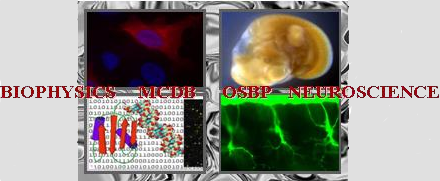Poster abstracts
Poster number 54 submitted by Lindsey Anstine
Genomic profiling reveals novel transcriptomes and temporal dynamics of murine heart valve endothelial cells
Lindsey J Anstine (1Molecular, Cellular, and Developmental Biology Graduate Program, The Ohio State University, Columbus, OH, USA,2Center for Cardiovascular Research, The Research Institute at Nationwide C), Blair F Austin (2Center for Cardiovascular Research, The Research Institute at Nationwide Childrens Hospital, Columbus, OH, USA ), Tori Horne (The Ohio State University, Columbus, OH, USA.), Joy Lincoln (2Center for Cardiovascular Research, The Research Institute at Nationwide Childrens Hospital, Columbus, OH,3Department of Pediatrics, The Ohio State University, Columbus, OH, USA)
Abstract:
Heart valve insufficiency affects ~2.5% of the population and aging is a significant risk factor, however its not clear why. In the elderly, composition of the valve extracellular matrix (ECM) is altered, and studies have shown that valve interstitial cells (VICs) mediate ECM homeostasis, while overlying valve endothelial cells (VECs) regulate VIC function. Based on this, we hypothesize that age-dependent changes in endothelial cell dynamics underlie valve disease in the aging population. Using electron microscopy, we observe changes in VEC morphology and distribution in aging valves. In addition using RNA-seq, we have generated age-dependent molecular profiles of VECs isolated from mice at embryonic (E14.5), post-natal (PN), adult (4 months) and aged (12-15 months) stages. Additional analysis identified Focal-Adhesions as a significantly affected pathway between embryonic, post-natal and adult time points. We validated this finding by testing VEC permeability in vivo using Evans Blue and found VECs in aged mice are more permeable than those of weanlings, suggesting a potential mechanism by which the aging valve is more susceptible to systemic age related changes. As cell cycle genes were markedly reduced in VECs following post-natal growth and endothelial stem cell markers were detected, we examined if circulating cells play a role in maintaining the adult valve endothelium. To do this, we performed bone marrow transplants and observe donor cells co-expressing endothelial markers on the surface of the valve cusps. Current studies are investigating the functional differences between young and aging VECs as well as the contribution and molecular plasticity of bone marrow-derived cells engrafted within young and aging valves.
Keywords: heart valve, aging
